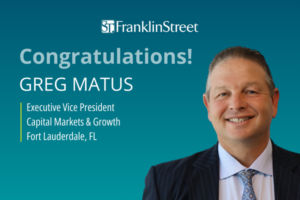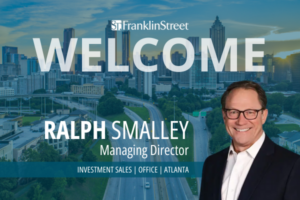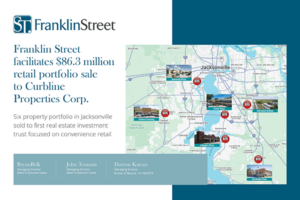With maturity looming for a hefty chunk of the commercial real estate debt originated during the market peak a decade ago, the demand for refinancing will continue unabated in 2016. According to the CRE Finance Council, some $700 billion of loans will come due in 2016 and 2017, on the heels of $700 billion in 2014 and 2015.
Concerns about lenders’ capacity to refinance maturing loans have yet to be borne out. According to Ted Norman, Charlotte, N.C.-based head of mortgage originations for TIAA-CREF global real estate, “The industry is still working our way through a significant account of loan maturities. So those are presenting an abundant level of refinance opportunities. There’s a significant amount of debt capital to provide liquidity for those refinances.”
With interest rates still at historic lows, the refinancing environment remains favorable for borrowers. Those looking to refinance have been able to take advantage of interest rates in the 4 percent range in 2015. The most aggressive private capital sources, such as private-equity lenders, are willing to go as high as 85 percent loan-to-value.
“If you are looking for flexibility, some of the private lenders are a good way to go today,” said Steve Bennett, a senior loan originator with Atlanta-based Franklin Street Capital Advisors. “Commercial banks are also getting aggressive. They are seeing so much more competition than they have seen in previous cycles.” On the other hand, rates for Class C assets could go as high as the mid-5 percent range, and non-recourse loans are less likely.
Gateway Bonus
Capital for refinancing is also more readily available in gateway markets like New York City and San Francisco than in secondary and tertiary markets. With cap rates lower in top-tier markets, lenders are willing to be more aggressive.
As a case in point, this fall Cushman & Wakefield Inc.’s equity, debt and structured finance team arranged a $650 million fixed-rate mortgage for 590 Madison Ave., a 1 million-square-foot Midtown Manhattan trophy tower formerly known as the IBM Building. Its owner, the State Teachers Retirement System of Ohio, chose refinancing as an alternative to selling a minority stake. The Wall Street Journal reported that STRS Ohio planned to use the proceeds to retire a $350 million loan two years early and lock in a low interest rate. Goldman Sachs Mortgage Co. provided the capital and had also originated the previous loan in January 2007.
Well-located, high-quality properties in other major markets continue to attract refinancing dollars, as well. In one such deal, announced in October, TIAA-CREF provided $220 million for the Eddie Bauer Building, a 538,705-square-foot Class A office property in Bellevue, Wash. Besides its name tenant, the eight-year-old, 28-story building counts Microsoft Corp. among its occupants. As with 590 Madison Ave., Cushman & Wakefield’s equity, debt and structured finance unit arranged the financing,
For long-term borrowers who are undeterred by yield maintenance or prepayment penalties, taking advantage of today’s favorable rates by refinancing early offers an attractive option. Some may find it advantageous to negotiate the defeasance or prepayment penalties and refinance. And because property values generally continue to rise, cash-out refinancings are also going strong, especially for properties demonstrating growth in net operating income.
Could rate hikes spoil the party?
While today’s interest rates are conducive to refinancing, industry participants foresee little major fallout in the next year or two as interest rates start their widely expected climb.
As rates rise, however, many experts believe that cap rates are likely to follow. That could impact proceeds if loan-to-value ratios are based on property values that are reduced by rising cap rates. As a result, t borrowers may need to contribute more equity, thus raising the cost of capital. “There could potentially be some pressure on cap rates so you will have to get more cash into the deal,” said Tim Touhey, senior vice president for commercial real estate lending with Investors Bank in Robbinsville, N.J.
If rising cap rates shrink proceeds on senior loans, demand for mezzanine financing could also increase. In the last few years, borrowers have been able to turn to readily available mezzanine capital and private-equity funding to hike their takeouts.
“We are doing a lot of structured deals where we are lending more than would be normally underwritten in the senior tranche by lending in mezzanine debt,” reported Gary Tenzer, a principal with George Smith Partners Inc. “In general, lenders have gotten more aggressive through the year.”
Assuming that the Federal Reserve moves to normalize interest rates, market participants speculate that refinancing rates could rise from 25 to 100 basis points in 2016. However, they expect that historically low interest rates will continue to make refinancing attractive for many borrowers.
“The big sigh of relief the market has taken in 2015 is that there is capital available, deals are getting done, and it is very affordable capital,” Bennett said. “And I don’t think that’s going to change next year. Even if rates move a little bit, that’s not going to change the needle in terms of deals getting done.”



